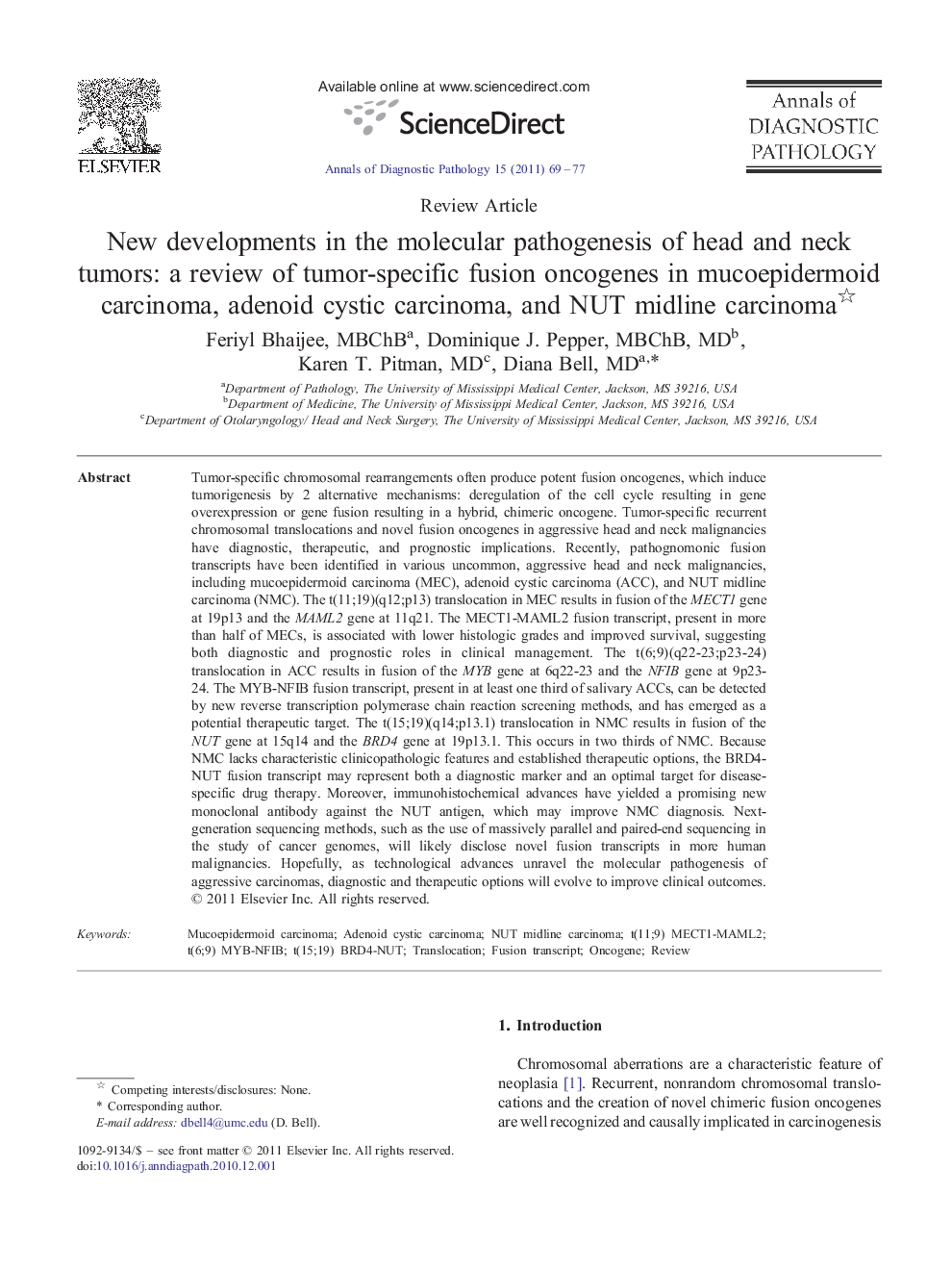| Article ID | Journal | Published Year | Pages | File Type |
|---|---|---|---|---|
| 4130087 | Annals of Diagnostic Pathology | 2011 | 9 Pages |
Tumor-specific chromosomal rearrangements often produce potent fusion oncogenes, which induce tumorigenesis by 2 alternative mechanisms: deregulation of the cell cycle resulting in gene overexpression or gene fusion resulting in a hybrid, chimeric oncogene. Tumor-specific recurrent chromosomal translocations and novel fusion oncogenes in aggressive head and neck malignancies have diagnostic, therapeutic, and prognostic implications. Recently, pathognomonic fusion transcripts have been identified in various uncommon, aggressive head and neck malignancies, including mucoepidermoid carcinoma (MEC), adenoid cystic carcinoma (ACC), and NUT midline carcinoma (NMC). The t(11;19)(q12;p13) translocation in MEC results in fusion of the MECT1 gene at 19p13 and the MAML2 gene at 11q21. The MECT1-MAML2 fusion transcript, present in more than half of MECs, is associated with lower histologic grades and improved survival, suggesting both diagnostic and prognostic roles in clinical management. The t(6;9)(q22-23;p23-24) translocation in ACC results in fusion of the MYB gene at 6q22-23 and the NFIB gene at 9p23-24. The MYB-NFIB fusion transcript, present in at least one third of salivary ACCs, can be detected by new reverse transcription polymerase chain reaction screening methods, and has emerged as a potential therapeutic target. The t(15;19)(q14;p13.1) translocation in NMC results in fusion of the NUT gene at 15q14 and the BRD4 gene at 19p13.1. This occurs in two thirds of NMC. Because NMC lacks characteristic clinicopathologic features and established therapeutic options, the BRD4-NUT fusion transcript may represent both a diagnostic marker and an optimal target for disease-specific drug therapy. Moreover, immunohistochemical advances have yielded a promising new monoclonal antibody against the NUT antigen, which may improve NMC diagnosis. Next-generation sequencing methods, such as the use of massively parallel and paired-end sequencing in the study of cancer genomes, will likely disclose novel fusion transcripts in more human malignancies. Hopefully, as technological advances unravel the molecular pathogenesis of aggressive carcinomas, diagnostic and therapeutic options will evolve to improve clinical outcomes.
